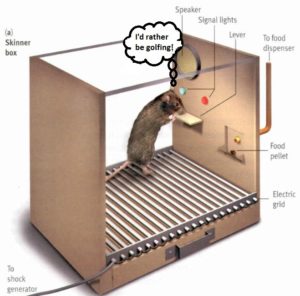Humility, thy name is kite boarding
I floated quietly in the warm ocean waters, a wake board on my feet, a giant kite hovering some 50 feet above me, a tether binding me to the kite. All I have to do is dive the kite and let it pull me up onto the wake board. I know I can do this. I want it to happen.
That said, my body is aching, my hat disappeared an hour ago, my sunglasses went a short time later, my calf muscles have been cramping, but I believe I can do it. All evidence is, of course, to the contrary as my latest kite boarding lesson plays out. This learning process is challenging, frustrating, and more than a little humbling.

I contemplate giving up. This is my sixth lesson and I should be better. Although those six lessons have taken place over 7 years, so maybe my expectations are a tad high? Still, it’s humbling to have to work so hard at this.
I’ve windsurfed for years, but little of my windsurfing experience has helped me master kite boarding. I guess the one concept that does carry over is the rhythm of learning the sport: fall down, fall down, fall down, up for a few seconds, fall down, fall down, up for a few, then fall embarrassingly into the water again. At some point that rhythm is interrupted by a not-falling-down interval. But then the wind shifts a little or the water conditions change and you’re back to fall down, fall down, etc. It goes like that for a few months (or years) until the intervals of not-falling-down begin to outnumber those of falling down. Then, suddenly, you’re windsurfing.
I’ve been frustratingly close to that point with kite boarding, but can’t quite get there. Given my experience learning to windsurf, I’ve tried to keep my expectations around kite boarding within reason. Still, the learning process is highly frustrating, especially as I watch really good kite boarders (most are half my age) zipping around me and even taking off and soaring above me in free flight for a few seconds. That’s my goal – I want to fly on a kite.
And in all honesty, I did fly a few times during my most recent lesson. Sadly, it was unintended and uncontrolled flight – and pretty hilarious in hindsight. One minute I am floating serenely beneath the kite, and the next I am launched from the water like a cruise missile from a submarine – straight up into the air. The instructor tells me this has to do with my not releasing the control bar after diving and then elevating the kite while keeping the wake board above water and my toes pointed up and concurrently leaning back into the kite harness. Or something.

So much of learning is like that, though. You can study the theory, but at some point you have to get in the water and make it all work together. And it is usually frustrating. Like getting a new phone or new software that is really cool, but first you have to learn it. Many a blue streak has been uttered in frustration toward the good folks at Apple and Microsoft in those circumstances. Point being, there’s a lot of trial and error in it. Same with golf. And kite boarding.
Anyway, one consequence of my cruise-missile-style launch beneath the giant kites is that it jerks my feet right out of the wake board bindings, leaving the board 15-20 feet behind me (and upwind) once I re-enter the water. There’s no way I can walk the kite backwards and upwind, so I have to use my body as a sort of human wake board and sail myself upwind until I can grab the board and try again. This has to be the ultimate body-boarding, no? By tacking once or twice, I can make my way back to the board, slip it on, and try another launch. Note to self: keep eyes and mouth closed during this upwind human-body-boarding maneuver.

Why, why, why?
The day after my recent lesson, I’m consuming a steady quantity of ibuprofen to help manage the pain I’m feeling in various muscles and other body parts. Not only are my arms sore, but my knees and ankles have been bent in a variety of creative directions as the kite and board went in separate directions during my attempted launches. And I find myself wondering why? Why do I do it?
Well, because it’s there. And it’s cool. And it represents a huge challenge – both mentally and physically. I didn’t want to take lessons right away on a recent beach trip, but the sea and wind just called to me and I couldn’t resist. Within a few hours of hitting the beach I was in the water and tethered to a kite. I am conscious that many guys my age discover their physical limitations in just this way – by pushing the body to where the mind still thinks it can go, only to discover the mind was fibbing. One hopes that wisdom intervenes here to minimize injuries. So far so good on that score.
Motivational theory and the pitfalls of periodic reinforcement

I studied psychology in college, so I’ve learned a variety of human behavior theories, including the theory of periodic reinforcement. You can blame this theory for any number of human behaviors today – why novices return to the golf course after a bad round, why people play the lotto week after week, investing in the stock market, and of course why I keep trying to learn kite boarding. About the time I’m ready to give up, I actually do it. I get up. I scoot along the top of the water being pulled by that giant windsock. I very quickly crash again, but I’ve done it! I got up! Now I want to try again. That occasional positive reinforcement is enough to cause repeat behavior. If you always had a bad outing, you’d just give up; but occasional reinforcement reels you in and hooks you.
I’m going to take a little time to heal now before I take on the kite and board combination again. It really is an athletic endeavor, so I’m going to train a bit more – lift some weights, stretch a bit more, get in better shape – before I try again. That’s wisdom at work – melding the hopes and expectations of the mind with the reality of the body, and taking steps to extend the body’s capability. Hopefully I’ll be flying beneath a giant kite soon.
# # #
To see what professional kite boarders look like, and what ignites my passion around this sport, check out this youtube video:
You can take kite boarding lessons in many coastal cities and vacation destinations. In Texas, you can take lessons in Corpus Christi and Austin. Most vacation destinations in the Caribbean, Hawaii, and elsewhere also offer lessons. I’ve seen many young people taking lessons over the years, and a few old guys as well. Give it a try on your next coastal getaway!

